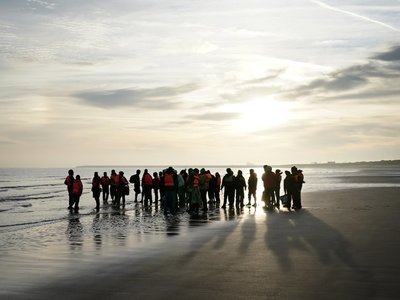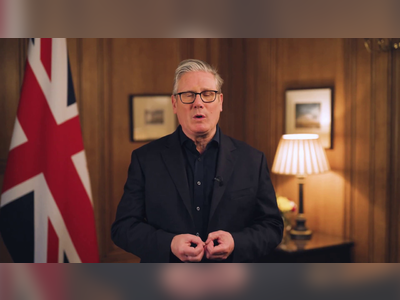
An app beloved by wine geeks grew during the pandemic. The founder explains what's next
Before there was Facebook, there was CellarTracker.
Eric LeVine, a former Microsoft employee who fell in love with wine on a bicycling trip in Italy, created the website for his own use in 2003 and released it to the public a year later. In 2005, he left his day job.
CellarTracker’s growth popped during the Covid-19 pandemic as wine retailers went digital and consumers sought out places to learn more about wine. CNBC caught up with LeVine for the inside story on the app’s beginnings — and how CellarTracker’s founder sees his prospects for the future.
CellarTracker made a name for itself as a place to look up wine varietals and buy bottles through other sites, such as Vivino. E-commerce itself was never LeVine’s top priority. Instead, the wine app helped enthusiasts manage what they have on hand, decide when to open wine bottles and figure out what they might want next.
That seemed to be precisely what users wanted. CellarTracker counts 11 million annual unique visitors, and tens of thousands pay for the service, which offers 9 million reviews of almost 4 million different kinds of wine.
Now, it’s expanding, along with other wine-oriented companies as consumers increase their online spending.
CellarTracker got on a whole new track in November 2020 when it took on an unspecified amount of money from angel investors.
“What I’m trying to do now is a start-up,” LeVine told CNBC in an interview. The company’s headcount sprouted from four people to 13 in 2021, with new hires in data science, engineering, design and marketing. LeVine said he wants to experiment more and explore new revenue sources.
Gone digital
It’s good timing. The wine world has become increasingly digital during the pandemic. Even with lockdowns, U.S. consumption was flat in 2020 compared to the year-earlier period, according to an estimate from the International Organization of Vine and Wine. But online channels represented over 9% of U.S. wineries’ total sales in November, up from 2% in April 2020, said Rob McMillan, founder of Silicon Valley Bank’s wine division. He said he could see it reaching 20% of all sales in five years.
In March 2020, wineries closed tasting rooms and people stopped visiting restaurants. Those two factors stripped out meaningful revenue sources that many wineries took for granted.
“Almost overnight we went from having the best start to a year we’ve ever had to effectively losing all of our restaurant, hotel and wine shop business overnight,” said Michael Kennedy, founder of Component, which makes wine in Napa Valley and the French region of Bordeaux.
Larger wineries had traditional distribution channels that carried their wine to grocery stores in place. Foot traffic declined in smaller locations, although people continued to buy in supermarkets through delivery services such as Instacart.
Some wineries already had their own wine clubs, through which they shipped bottles to members. Then there were wineries that had not diversified to take advantage of digital sales. Online wine retailer Yahyn, which started in 2019 and struggled to have calls answered by wineries, suddenly started receiving 15 inquiries per week in March and April 2020, managing partner Pierre Rogers said.
Meanwhile, investment in the wine business started to boom. “You see capital coming into the space in a big way from private equity and venture capital. I’ve seen it in the last year and a half, two years,” said Irv Goldman, CEO of Acker Merrall & Condit, a company that holds wine auctions and maintains a New York shop. The number of visits to the company’s website doubled from February 2020 to August 2021.
Among other developments, the online wine club Winc debuted on the New York Stock Exchange in November, and Vintage Wine Estates, a group of wineries, started trading on the Nasdaq Composite in June after combining with a special-purpose acquisition company.
“If you didn’t do well in the pandemic, you made some mistakes because it was a good time to be a wine retailer,” said Gary Westby, the Champagne buyer at K&L Wine Merchants, which has three California stores.
Some investors have doubts about their chances in the wine market. But entrepreneurs are more optimistic. It’s possible for a wine company to be valued at $10 billion, said Heini Zachariassen, founder of Vivino, an online wine retailer with an app people use to look up bottles by photographing labels with phone cameras. Vivino, with 55 million users, announced a $155 million funding round in February, at an estimated valuation of $500 million to $1 billion.
What’s next for CellarTracker
CellarTracker isn’t in the Vivino league just yet. Its website hasn’t changed much in the past nine years. Light yellow and burgundy backgrounds set a predictable theme, with text cast in longstanding Microsoft fonts such as Georgia and Verdana. The company released its mobile apps in 2014. The homepage shows a photo of LeVine’s personal cellar.
Profile pages for individual wines display user-generated “community tasting notes” and scores on the wine world’s 100-point scale, the percentage of bottles that users have consumed and drinking windows. People can add or remove wines from cellars, post public or private notes, upload label images, submit food-pairing suggestions and view similar popular wines.
Before a redesign in 2012, there were no notifications, no miniature profiles while hovering over wines and no side panels containing rich information next to search results. To appease those who don’t appreciate change, LeVine introduced a classic mode that provided access to the old interface.
“We have people who are like, ‘Don’t ever take the classic site away, and don’t change a thing,’” he said. “There’s always a subset of people like that. If you only listen to those folks, maybe they’re going to be the only people using the site someday.”
While the site is familiar to old timers, it’s not a cutting-edge internet property that attracts millions of new users each month. And it isn’t doing much with its data, which other companies can’t easily replicate.
Others, though, recognize CellarTracker’s value. LeVine said he has walked away from nine acquisitions, joint ventures or investments, including from Robert Parker Wine Advocate, which popularized the 100-point scale, after deciding he didn’t want to cede control.
Instead, in 2020, he decided to boost CellarTracker with outside investment under his terms. His lead investor is Brad Goldberg, a former general manager of Microsoft’s search business, who LeVine first met in 1997.
In 2021, the company hired its first data scientist, Eric Hullander, who started making observations about how long it can take wines to mature. Larger social networks such as Facebook and Microsoft-owned LinkedIn employ scores of data scientists to help develop data-powered features and analyze usage.
LeVine said the company is assembling an advisory group of wineries to figure out what they need, including a presence on the site and a means of giving information to consumers.
Then there are retailers. Scores and reviews from CellarTracker users are more plentiful than those from professional critics who could provide helpful context for online stores.
But the company wants to proceed with care, to avoid jeopardizing the site’s reputation as a productivity app for wine nerds.
“No creepy sh**, in a nutshell,” LeVine said. “You look broadly at technology and social media, and we’re awash in companies doing really creepy stuff with our data. We’re just not going there.”
If anything, CellarTracker has been too quiet.
“If I email people twice a year, it’s a lot,” LeVine said. “We’ll start to do a little more of that and let people turn that up or turn that down.”
The relative lack of nudging translates into fewer reasons to check CellarTracker for updates.
Jackson Rohrbaugh, a master sommelier and president of the Seattle-based online wine club Crunchy Red Fruit, stays on top of his wine collection using an Excel spreadsheet, but he visits CellarTracker to read tasting notes on certain wines.
“There’s times where it’s super helpful,” he said. “It’s such a cool community that’s come together to provide these really interesting wine notes.” But he reads the reviews with skepticism. Sometimes people might at first appear to be experts but, in fact, are not, he said.
That doesn’t mean the crowd can’t judge wine the way critics do. A 2016 Vox analysis of CellarTracker users’ wine scores showed a positive correlation with scores published by U.K. critic Jancis Robinson, International Wine Cellar and Wine Advocate.
Even Rohrbaugh has concerns about scores from critics. They might try five wines in one sitting, he said, but that’s not how most people drink wine.
With so many choices available to consumers, though, critics can provide value. Subscribers still pay to know what critics think.
Tim Komada, founder and managing partner at venture firm Deep Fork Capital, once followed Wine Spectator and Wine Advocate, but he let his subscriptions lapse. Instead, he pays annually for CellarTracker’s service.
“I am more likely to research (and trust) wine ratings via CT and its community ratings system than I am a singular publication that prints a singular critic’s scores/ratings,” he wrote in an email.
Komada, who moved to Philadelphia before the pandemic after 18 years in the San Francisco Bay Area, maintains over 1,000 bottles on his CellarTracker account, which he’s had since 2009.
“If it’s not in there, I just totally lose track of it,” he said.
Much of the collection is with him in Philadelphia, but the rest is in storage, and CellarTracker shows where different bottles are located and how much everything is worth.
“I don’t mean this in a bad way, but it kind of reminds me of Craigslist, versus all the other people who have come up against it,” he said. “It’s been there. It’s the market industry standard. It’s functional enough. And there have been companies that raised millions of dollars for similar things. CellarTracker has survived and thrived.”
It outlasted Vintrust, a start-up Komada co-founded in 2003 that stored wine for collectors and helped them manage inventory. Vintrust, which shut down its consumer storage business in 2009, was once interested in acquiring CellarTracker, but LeVine balked, saying he wanted to focus on organic growth, Komada said.
Fateful party
In 2019, family members and friends gathered at the respected Seattle Italian restaurant Bisato to celebrate the 50th birthdays of LeVine and his wife, Suzi. Late into the evening, after most people had left and LeVine had ordered a few bottles of Barolo and Burgundy wines so people’s glasses wouldn’t be empty, he got to talking with Goldberg, his former Microsoft colleague.
LeVine had just received an offer to sell control of the business, and he was trying to figure out his next step. We should sit down, Goldberg told LeVine, and they found a table to be alone together. Goldberg told him he had advised many CEOs before, and that he was happy to be of help.
Two days later LeVine and Goldberg were talking for hours over espresso. Goldberg said he helped LeVine “get clear” on what he wanted.
“I was so cautious,” LeVine said. “I saw so many other things screw up because of too much ambition. If CellarTracker was going to screw up, it was because of a lack of ambition.”
Later, the wine entrepreneur and Goldberg brought in Russ Morgan, who had worked in management at Amazon and Microsoft. Morgan would later join as CellarTracker’s operating chief. Goldberg gave LeVine a number of options, including an investment, and that’s the one he chose.
Institutional venture money might have been too extreme for an 18-year-old company. Having cultural alignment from individual investors proved to be more suitable, said Goldberg, who has published 185 tasting notes in his 15 years on CellarTracker.
Now, Goldberg said, there’s room to make existing functions easier to use for newer members, and to become essential for researching what to purchase next. If those initiatives are successful, then new ones can follow. And over time the company could take on more outside money, Goldberg said.
“I want CellarTracker to be thriving 10, 20, 40 years from now,” LeVine said.











